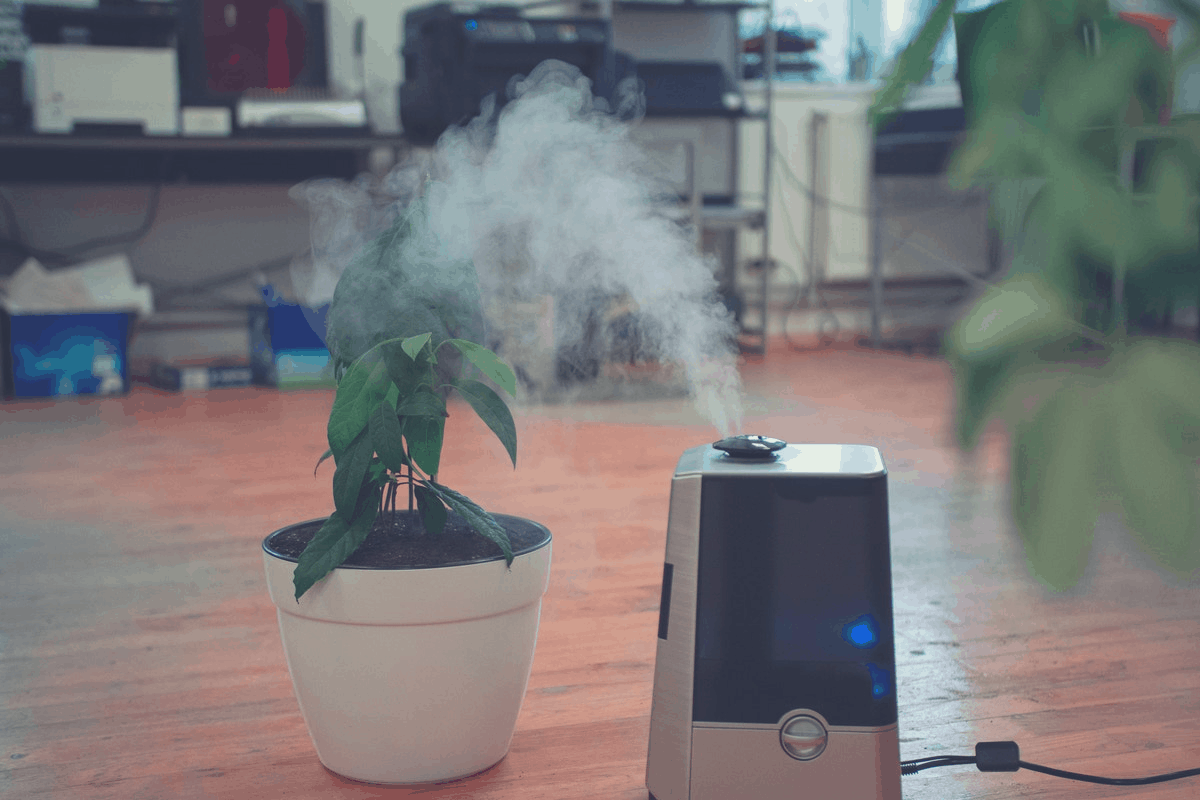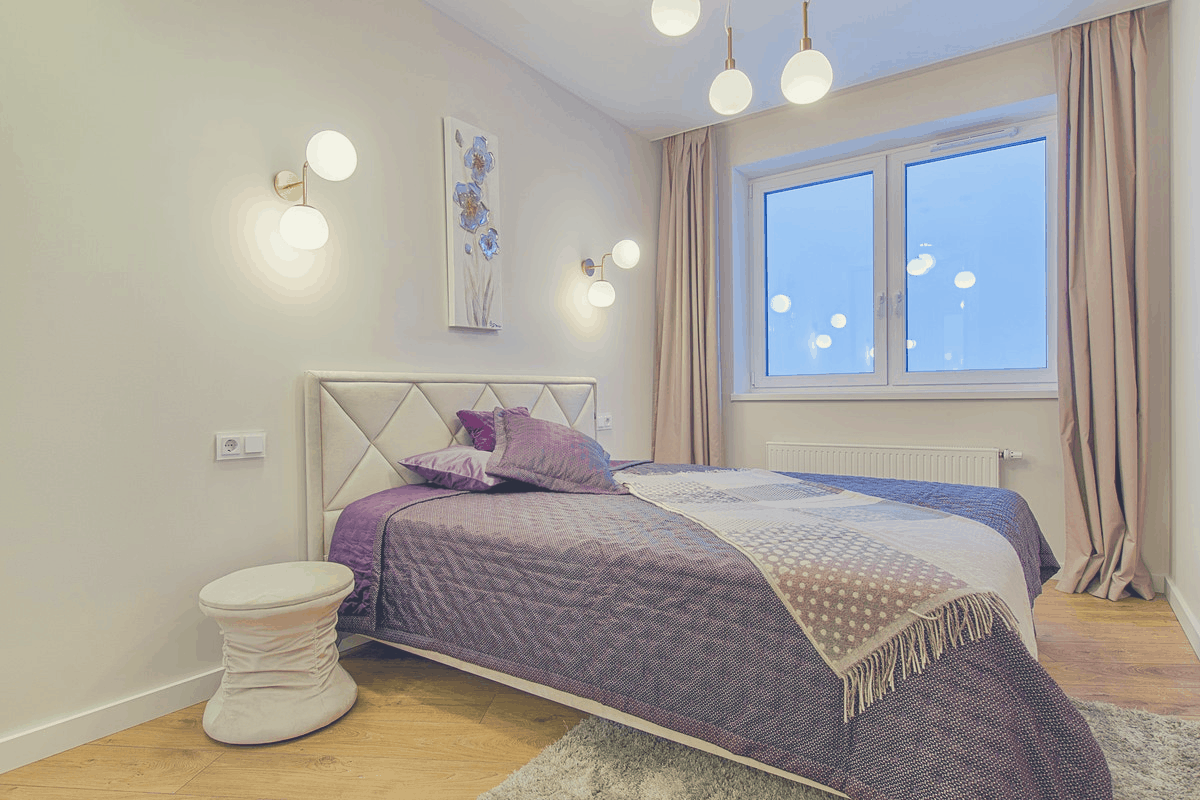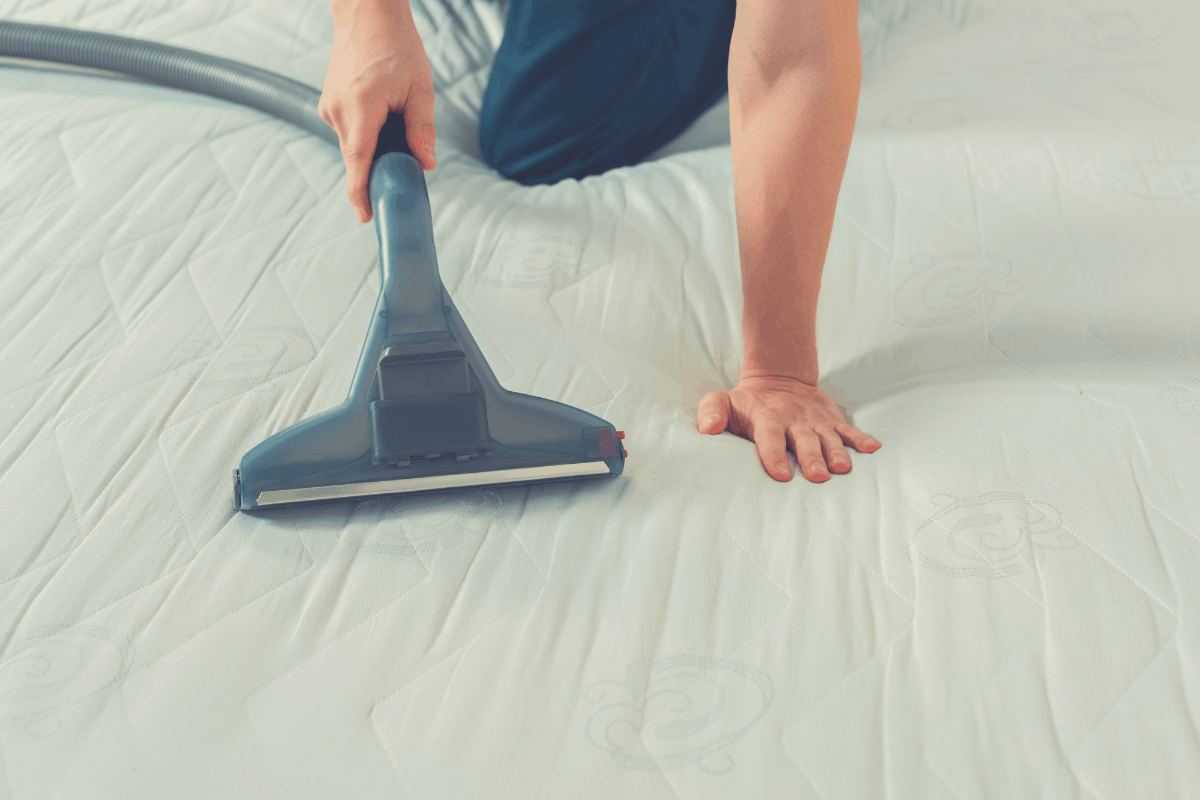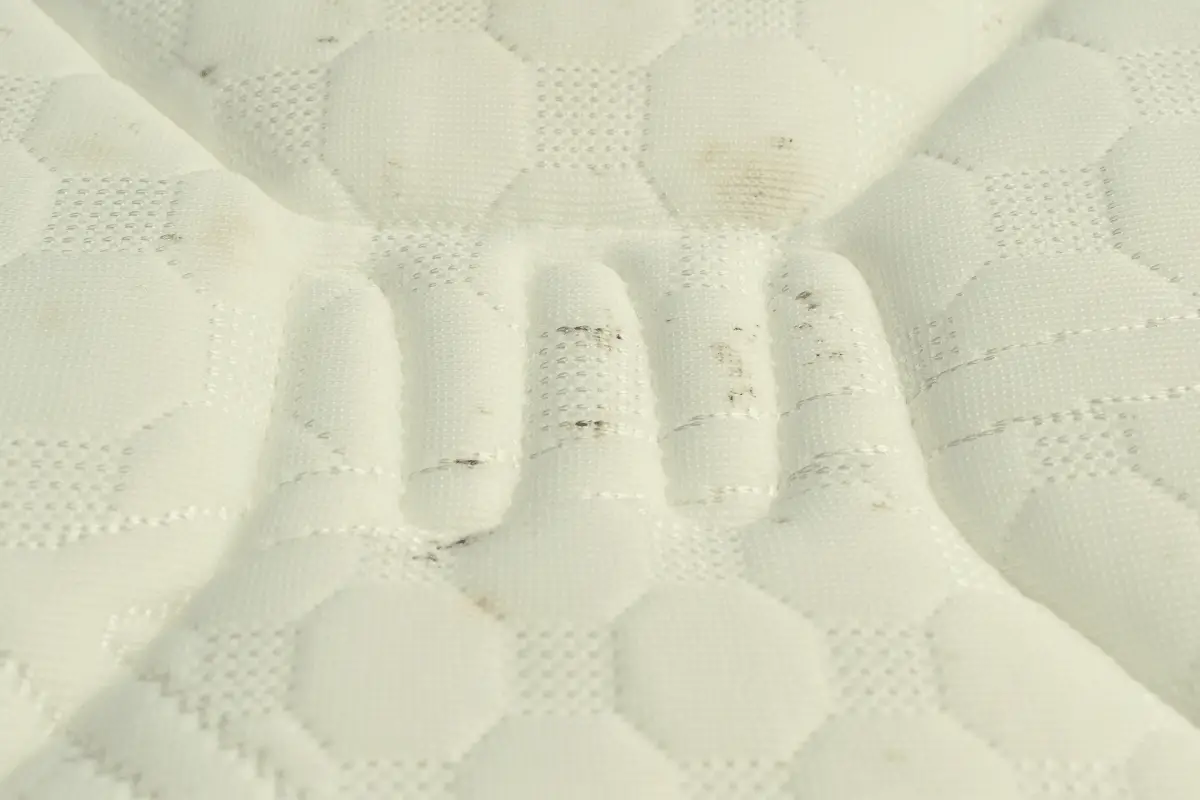Have you spotted signs of molds in any part of your mattress? This can be an understandingly heartbreaking period especially if it is an expensive purchase only a few months or years old. Unfortunately, molds can be a huge problem for consumers living in bedroom environments where they can thrive.
The good news is that you can now attack the problem as ferociously as possible until the mattress is free of the ugly-looking and pungent-smelling molds.
Shall we take a look at how to prevent molds under your mattress?
How To Prevent Molds Under Mattress
Molds may be a threat to your beloved mattress by not only defacing it but can also expose you to a wide range of health conditions. Like most things in life, prevention is better than cure which is why we’ve outlined the various ways you can keep your mattress mold-free.
1. Humidifier

As previously stated, molds thrive in moist environments which is why getting a good humidifier can be a smart way to keep the problem at bay. Humidifiers draw out moisture from the environment to ensure that your sleeping surface stays as dry as possible.
This can hinder the growth of the pest before they become an issue that gets too difficult to eradicate.
Remember, the majority of us sweat at some point during the night. This may transfer significant amounts of moisture to the mattress, encouraging the growth of molds and other microorganisms.
Turning on the humidifier overnight can wick out moisture from the mattress to keep it consistently dry.
The Everlasting Comfort Bedroom Humidifier from Amazon has transformed my bedroom environment since I ordered it last month. It keeps my mattress humid by quickly wicking away sweats and moisture. It is especially recommended for naturally hot sleepers, menopausal women, and those who live in warm regions.
2. Air Purifier
Just like the name sounds, air purifiers ensure that the air circulating in the bedroom stays clean day and night. Molds reproduce via tiny, lightweight spores that travel through the air circulating in the environment at any particular point in time.
The presence of mold spores in the air can supercharge the spreading of the problem from one area of the mattress to the other. This can lead to a sizable portion of the mattress getting infected within a short period.
This is why the use of an air purifier can be so important. Turning it on begins the air purification process which eliminates any infected mold spores in the air to keep these pests under control.
The Winix Air Purifier With True HEPA, PlasmaWave, and Odor Reducing Washable AOC Carbon Filter from Amazon is the number-one Air Purifier for sale today. It blocks 99.97 % airborne pollutants such as mold spores and bad odors from the bedroom environment. I couldn’t recommend it highly enough.
2. Choose A Mattress With Built-In Anti Microbial Treatments
A mattress can be a huge investment particularly for those who sleep on King and Queen-sized beds. If you want a brand name model, costs can run into several thousand dollars which is why getting value for your cash should be non-negotiable.
Choosing a mattress with built-in anti-microbial treatments may be one of the smartest ways to prevent molds under your mattress. These treatments are typically integrated into the mattress manufacturing process to stifle the growth of bacteria, molds, and mildew and their resultant effects such as stains and odors.
You can find out specially-treated mattresses by checking the product details manufacturers list about specific models. Watch out for terms such as “anti-bacterial, anti-molds, and hypoallergenic” to discover mattresses that have undergone the necessary treatments.
3. Waterproof Mattress Cover
Mattress covers or protectors can serve as a buffer between the sleeper’s body and the mattress itself. This means protection against dirt, dust mites, and of course, spills from food and drinks.
If you’re serious about preventing molds from developing under your mattress, encasing it with a protector can be an effective solution.
Mattress covers come in different types but experts recommend targeting waterproof models to provide resistance against molds. If you’re sharing a bed with a baby, these covers can also offer protection from peeing and vomiting accidents typical among newborns.
The SafeRest Premium Hypoallergenic Waterproof Mattress from Amazon offers protection against dust mites, molds, bacteria, and allergens. It features a waterproof cotton terry membrane surface that is noiseless and breathable.
4. Sundry The Mattress Regularly
Sunlight is mold’s biggest enemy because it kills the spores rapidly. As such, regular sun-drying of a mattress can keep it in a pristine condition even if you live in a mold-prone environment. The trick is to find a well-lit area of the backyard and allow the direct sunlight to hit the mattress for several hours at once.
Do not forget to flip the mattress so the other side can gain exposure to sunlight as well. Doing this even once a month may eliminate existing mold spores on the mattress surface to de-escalate the risk of possible infestations.
If you live in an apartment block without a backyard, perhaps the balcony can offer space for sun-drying the mattress.
5. Keep Bedroom Airy While Away

Hot region residents typically struggle to sleep without turning on a fan or air conditioner. However, the majority of us switch off these gadgets immediately upon waking up which instantly inhibits air circulation in the bedroom.
Therefore, any traces of moisture on the bed may linger for long periods, encouraging the growth of molds. This practice can lead to the spreading of the mold spores from one area of the mattress to another until a significant portion gets infested.
Keeping the air in the bedroom circulating even when going out can be an effective way to eliminate the moisture built up through perspiration. Sure, this may not be the most energy-efficient method but it can save your expensive mattress from destructive molds.
6. Choose A Breathable Mattress
Breathable mattresses may come in handy in many ways. Not only can they provide superior sleep throughout the night but these mattresses may also offer protection against molds, mildew, and other pests.
Some form of moisture is inevitable as long as somebody sleeps on a mattress. Even during colder periods of the year, night sweats can still be a regular occurrence. This may be more common in mattresses with minimal pores to promote good air circulation.
Moisture can build up quickly in non-breathable mattresses, especially on the undersides, leading to bacterial invasions and resultant effects.
The Sweetnight Breeze Memory Foam Mattress from Amazon has transformed my life since I ordered it 3 months ago. It allows me to sleep extremely cool even during the summer while offering world-class pressure relief and sleeping comforts. I no longer wake up to back pain thanks to this mattress.
7. Flip Your Mattress Regularly
Mattress makers and sleep experts recommend routine flipping of mattresses but how many of us follow through with that? Well, anyone that wants to stay on top of molds in their mattress better heed that advice.
Catching molds in the early stages can ensure proper cleaning and disinfecting of the affected area to prevent the problem from worsening. In most cases, molds develop on the opposite side of the area we typically sleep on. This means it can be extremely difficult to notice the problem until it is too late.
Fortunately, flipping your mattress monthly can be the way out. Make sure to inspect not only the undersides but all 6 sides of the mattress thoroughly. Any traces of molds or stains should be cleaned and disinfected immediately to keep things under control.
8. Change Bed Sheets Regularly And In The Mornings
If you’re fond of changing bed sheets sparingly the chances of spotting molds early can be lower. Many consumers only realize that their mattresses may be under a mold attack when the problem is further advanced because they hardly change their sheets.
The solution is to strip the mattress of all bedding 2-3 times a week and replace it with fresh sheets. Not only can this improve your sleep but it may also discourage the growth of molds.
Avoid doing this at the end of the day as you may be too tired to properly inspect the mattress.
9. Brightly Lit Bedrooms
Dark environments provide the optimum conditions for molds to grow especially when combined with dampness. Making sure that your bedroom is brightly lit can discourage mold spores from thriving.
Be sure to allow as much natural light into the bedroom by opening doors and windows in the home or apartment. This may be especially important during the daytime when you may be at work.
Also, do not forget to un-draw the bedroom curtains to allow natural sunlight. This can also help eliminate any lingering odors in the bedroom to provide a fresh breathing environment.
How Do Molds Develop On Mattresses?
Molds thrive in environments which are dark, warm, and moist and since the majority of bedrooms have these characteristics, mattresses can become an easy target.
Night Sweats: Many of us may wonder how mattresses attract moisture when we do not eat in bed or suffer peeing accidents but that there’s a perfect explanation for that. Regardless of what time of the year it is, the majority of us sweat throughout the night.
This can lead to a build-up of moisture in a specific area of the mattress whether underneath or at the top surface.
The open-cell structure of foam: Foam materials ranging from memory foam to latex as well as other polyurethane foams feature open-cell structures that provide rapid air circulation to regulate the sleeper’s body temperature throughout the night.
Unfortunately, this structure can provide an opportunity for molds to thrive and spread to other areas of the mattress quickly. By the time many of us realize, sizable portions of the mattress are already moldy, if not every area.
Lack of mattress surface inspection: Can you remember the last time you inspected the surface of your mattress thoroughly? Many of us only get a sneak peek of our mattresses when changing the sheets. This means mold infestations are seldom caught early and the situation can get dire by the time we notice signs of the destructive pests.
Signs of Molds On Your Mattress
A downside of mold is that it can often be difficult to notice until the situation is too late after the mattress is already deeply affected. Here are a few signs of molds to look out for in your mattress.
1. Odors
Every household has odors that may be specific to it. However, if your mattress smells meaty, earthy, or something close to rotten wood or wet socks, chances are it may be in the early stages of a mold infestation.
These odors can be extremely pungent and uncomfortable. Some homeowners report feeling like throwing up whenever they smell these odors. Unfortunately, the smell will only worsen over time as the mold spores grow and reproduce.
This may force sleepers to inhale potentially harmful gases popularly known as Volatile Organic Compounds (VOCs) by the sleeper.
As previously stated, early detection can be the key to the proper treatment of molds. But how can you be sure that the musty smell originating from a mattress is mold-related? Well, this is where professional mold testers and inspectors can come in handy.
They can test the mattress’s smell and verify the presence of mold spores for the right line of attack to be formulated.
2. Health Complications
Mold exposure can lead to a wide range of health complications that may negatively affect the overall quality of your life. Some strains of molds can lead to respiratory issues such as persistent wheezing and coughing in infants. This is why you should always look out for mold-resistant baby mattresses during shopping.
Some adults may be more susceptible to molds than others depending on the strength of their immune systems. Smokers and those with a history of lung infections are usually more prone to suffering health complications upon exposure to molds.
A few of the most common health issues people suffer upon contact with these pests include:
- Eye irritations
- Nasal stuffiness
- Cough and wheezing
- Skin irritations
- Throat irritations
- Mold-induced hypersensitivity
- Sneezing fits
3. Appearance
Moldy mattresses typically exhibit black or white-colored textures of frizzy layers which can be pretty enormous size-wise. Black or pink mattress stains that look fluffy may also be a sign of molds.
Early detection can prevent molds from spreading across the entire surface of your mattress. Unfortunately, by the time molds appear physically, the infestation is already well-advanced and lots of efforts will have to be invested to salvage the mattress.
How To Clean Molds Off Your Mattress
No doubt seeing molds on a mattress can be heartbreaking especially fairly new ones with large price tags. However, as long as you take to cleaning it up immediately, the chances of getting the stains off the mattress can be high.
Before beginning the cleaning job, it might be a good idea to read the warranty terms that shipped with the mattress. This can prevent you from engaging in any cleaning methods frowned upon by the manufacturer which may void the warranty on the mattress.
Here are step by step instructions to clean mold stains off a mattress.
1. Vacuum The Mattress

The first step to cleaning molds is to vacuum each side of the mattress. Even if the molds have affected only a small area, it is still important to vacuum the entire length and breadth of each side.
This can prevent existing mold spores from spreading and infecting other sides of the mattress. Remember to clean out the dust catcher area of the vacuum to prevent the caught mold spores from spreading to the carpets and other areas of the home the next time the vacuum cleaner is used.
The Shark Navigator Lift-Away Deluxe NV360 from Amazon is the number-one-rated HEPA certified vacuum cleaner on the market today. It keeps my mattress devoid of molds, bed bugs, bacteria, and allergens that can increase the risk of diseases and infections. It also offers amazing cleaning solutions for floors, carpets, and other parts of the home. I highly recommend it to everyone.
2. Scrub the Mattress
Once the mattress has been thoroughly vacuumed, the next step is to scrub every inch of each side with an alcohol and warm water solution. The steps are as follows:
- Mix 1:1 ratio of alcohol and warm water into a plastic bowl
- Dip a clean napkin into the solution, wringing it out carefully to avoid wetting the mattress unnecessarily
- Remove the moist cloth and scrub the moldy area of the mattress in a circular motion
- Use as much effort as possible during scrubbing to remove the stains quickly
- Scrub the rest of the mattress surface with the warm water + alcohol solution once the stains are cleared
3. Time To Rinse
After scrubbing off the stains, it is time to rinse the entire length of the mattress to remove traces of the alcohol solution from the surface. Here are the steps to follow.
- Fetch warm water in a disposal bowl if possible
- Put a clean cloth or napkin in the water and wring it out carefully so it is damp but not wet
- Rinse the previously moldy area as well as the rest of the mattress surface
- Make sure to rinse well to remove traces of the alcohol solution previously used in scrubbing
4. Disinfect The Mattress
Disinfecting the mattress is the next logical step as you’d want to remove all traces of the musty odors associated with molds. This can be done by spraying all sides of the mattress with a disinfectant solution.
I prefer disinfecting my mattress with a home-made solution consisting of white vinegar, distilled water, lemon oil, and tea tree oil. The ingredients are as follows:
- 1 cup white vinegar
- 1 cup distilled water
- 10 drops lemon essential oil
- 10 drops tea tree essential oil
All of the ingredients can be poured into a 16 oz spray bottle. The bottle should be covered and shaken repeatedly to aid in the proper mixing of the solution. You can then spray on the entire length of the mattress.
5. Sun-dry the Mattress
The final step is to give the mattress a bit of sunlight love by taking it to a well-ventilated area such as the backyard (for residents of the suburbs) and balconies. Exposure to sunlight can kill off any remaining mold spores in the mattress.
Additionally, leaving your mattress in the sun may also provide an additional deodorizing effect. This can translate to the removal of all odors and a fresh-smelling mattress that promotes good sleep.
However, check the local weather to ensure little to no chance of rain before leaving out your mattress in the backyard if you intend to go out. The last thing you want is to come home to a rain-soaked mattress.
Have you seen the article we wrote on How to Clean A Dirty Mattress? Click the link to check out the cost comprehensive cleaning guide on the web today for every type of memory foam.
Drawbacks of Molds on Your Mattress
The drawbacks of moldy mattresses can be enormous and this is why taking the necessary steps to prevent them may be so important. Here are a few negatives of suffering a mold attack on your mattress.
Stains and disfiguring: The last thing anybody wants is to sleep on a stained and disfigured mattress. It can lead to feelings of an uneven surface which may hinder the ability to nod off at night. If you have a partner or visitors coming in, a moldy mattress can be an embarrassing spectacle for everyone.
Off-putting Odors: The odors associated with molds can be extremely off-putting thanks to its pungent nature. In severe cases, some consumers report throwing up immediately they smell the terrible odor.
Health Complications: Moldy mattresses may expose sleepers to health complications ranging from asthma and breathing problems in babies to coughing, sneezing, and hypersensitivity in adults. These issues can cause significant sleep disturbances especially among those with compromised immunity.
Shorten Mattress Lifespan: The average lifespan of a mattress is 7-10 years. However, molds can shorten it considerably especially when the problem is not detected early enough. The stains may be so severe that no amount of cleaning can remove them. The mattress can become impossible to sleep on as a result meaning consumers may be forced to shell out on a replacement.
Conclusion
We’re honored to share the best ways to prevent molds from developing under your mattress. Following these steps can safeguard every type of mattress from these pests even if your bedroom environment is mold-friendly.
It is important to keep your mattress dry and well-ventilated by allowing air to circulate the bedroom at all times. Also, try to sun-dry the mattress regularly to annihilate any mold spores that may be developing. Do not forget to change bedding regularly while inspecting the mattress in the process.
If your mattress has already developed molds, the step by step cleaning instructions stipulated above can also come in handy.
